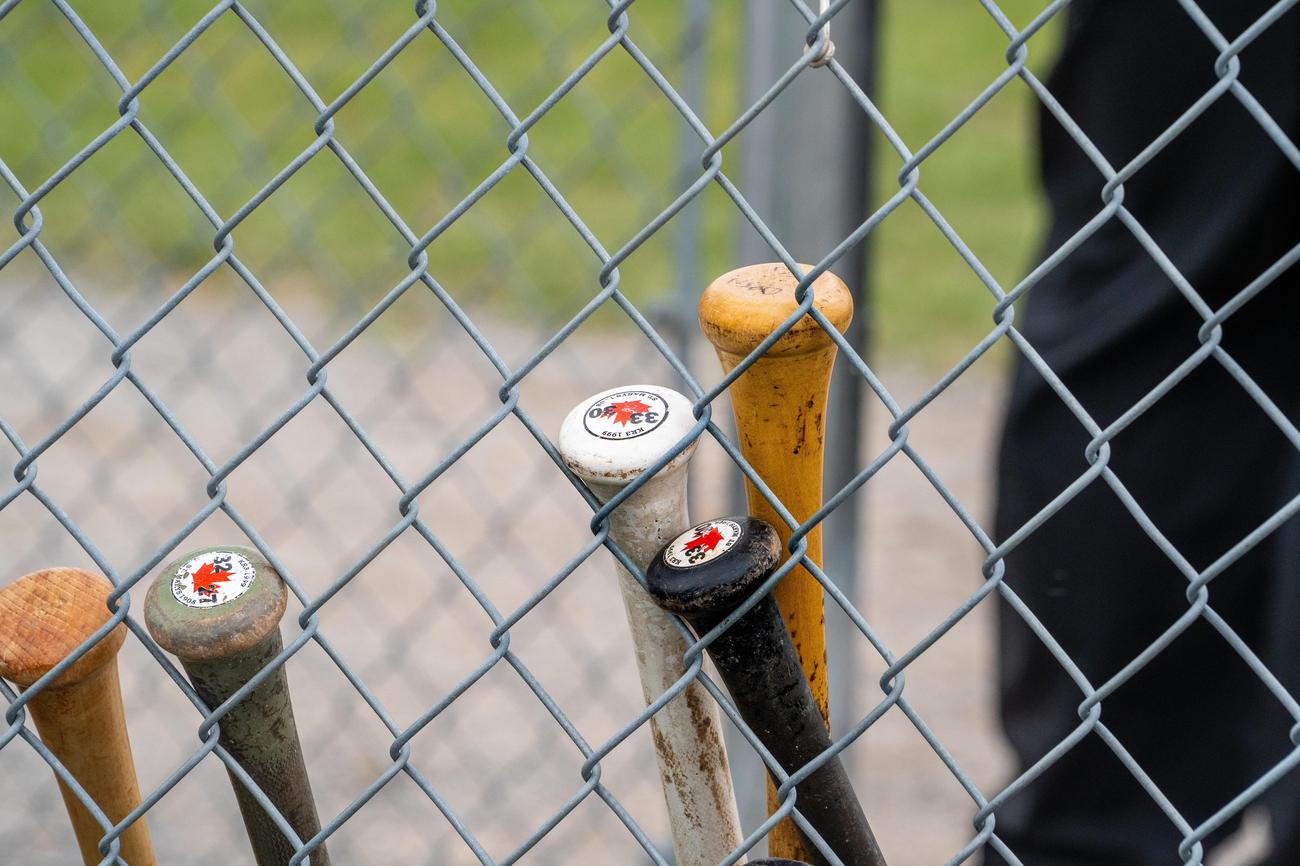Welcome to the fascinating world of softball bats, where fun facts await at every turn. In this article, we will unravel the intriguing realm of soft pitch weapons, shedding light on the lesser-known aspects of these essential tools of the game. From their evolution to design intricacies, historical milestones, and impact on players’ performance, we will delve into the gripping world of softball bat fun facts. So, whether you’re a seasoned player, an enthusiastic fan, or a curious newcomer, get ready for an engaging and enlightening reading experience as we uncover the secrets behind these remarkable pieces of athletic equipment.

Fun Facts About Softball Bats
Softball bats may seem like just another piece of equipment used in a game, but they actually hold a world of fascinating facts and details. Whether you’re a seasoned player, an enthusiastic fan, or a curious newcomer to the sport, exploring the realm of fun facts about softball bats can deepen your appreciation for this incredible sport. So, let’s dive in and uncover some captivating insights!
1. Softball Bats and Their Evolution
Softball bats have come a long way since the inception of the sport in 1887. Originally, they were nothing more than rolled-up gloves, offering a makeshift solution for a ball. Today, however, modern softball bats undergo meticulous design and engineering processes to enhance players’ performance. They are crafted with specialized materials, such as aluminum, composite, or a combination of both, to provide optimal power, speed, and control.
“From rolled-up gloves to cutting-edge materials, the evolution of softball bats showcases the sport’s commitment to pushing boundaries and maximizing player potential.”
2. The Distinction between Fast-Pitch and Slow-Pitch Bats
When it comes to softball bats, it’s essential to understand that there are two main types: fast-pitch and slow-pitch bats. These bats are tailored to suit the specific requirements and playing styles of each format. Fast-pitch bats are lighter and shorter, enabling hitters to generate quick bat speed and maneuverability. On the other hand, slow-pitch bats are typically heavier and longer, allowing for increased power and distance.
“Just as players adapt to different game speeds, the bat itself undergoes unique alterations to match the demands and nuances of fast-pitch and slow-pitch softball.”
3. The Impact of Softball Bats on Players’ Performance
Softball bats play a crucial role in determining a player’s performance on the field. With their varying lengths, weights, and barrel sizes, bats can greatly influence the power, accuracy, and consistency of a hitter’s swing. The choice of bat can be a deeply personal one, as players seek to find the perfect balance that suits their playing style and preferences.
“The right softball bat is more than just a tool; it becomes an extension of a player’s abilities, amplifying their strengths and enabling them to reach new heights.”
4. Design Intricacies and Technological Advancements
The design intricacies and technological advancements in softball bats are truly remarkable. Engineers and manufacturers continuously strive to push the boundaries of innovation, utilizing cutting-edge technologies and materials to create bats with enhanced performance characteristics. These advancements range from intricate barrel designs to reduce vibration and increase trampoline effect to composite materials that optimize the sweet spot for maximum power.
“Behind the scenes, the world of softball bat design is an exhilarating blend of science, technology, and artistry, resulting in bats that elevate the game to new levels.”
5. Historical Milestones in Softball Bat Development
Throughout history, there have been significant milestones in the development of softball bats. These milestones mark pivotal moments where advancements in technology and design forever changed the landscape of the game. The transition from wooden to aluminum bats in the 1970s revolutionized the sport, paving the way for heightened performance and durability. Subsequent advancements in composite materials further pushed the boundaries, offering even greater performance capabilities.
“Just as historical milestones shape society, the world of softball bats has witnessed revolutionary moments that have forever altered the game and player experiences.”
6. Regulations and Standards Governing Softball Bats
To ensure fair play and maintain a balance between offense and defense, organizations establish regulations and standards for softball bats. The governing bodies stipulate parameters covering bat length, weight, barrel diameter, and performance thresholds. These guidelines aim to maintain a level playing field for all players and promote fair competition within the sport.
“By setting regulations and standards, the softball community strives to promote fairness while safeguarding the integrity and spirit of the game.”
As you can see, the world of softball bats is a fascinating realm filled with intriguing facts and insights. From the evolution of these remarkable tools to their impact on players’ performance, softball bats are a quintessential component of this captivating sport. So the next time you step onto the field or cheer from the stands, remember the wonders that lie within these incredible pieces of equipment.
“Embark on a journey through the realms of softball bats, and you’ll discover a universe of stories, innovations, and triumphs that continue to shape the sport we all love.”
Softball is a sport that has been around for decades, captivating players and fans alike. If you’re looking for some interesting insights into this beloved game, we’ve got you covered with a list of fun facts about softball. From its origins to its rules and gameplay, these facts will surely pique your curiosity. So why wait? Click here to uncover the excitement: fun facts about softball.
Fun facts about softball bats are always fascinating, but have you ever wondered about the intriguing details of softball bats? These tools of the game have a rich history and interesting features that are worth exploring. If you’re curious to uncover quirky records of softball bats, you’ll be amazed by the unique and surprising information out there. And if you’re someone who enjoys delving into the historical origins of softball bats, prepare to be transported back in time as you learn about their evolution. So, why wait? Click here to dive into the intriguing details about softball bats, here to uncover quirky records of softball bats, or here to explore the historical origins of these fascinating sports tools. Happy reading!
- Intriguing details about softball bats
- Uncovering quirky records of softball bats
- Historical origins of softball bats
Softball Rules: A Comprehensive Guide to Playing Softball
[youtube v=”YLU6W6AYQto”]
Objective in Softball
The primary objective in the game of softball is to hit the ball with a bat before attempting to run around the infield’s four bases. A batter scores a run by successfully hitting the ball and making it around the bases without getting out. At the end of the game, the team with the most runs is declared the winner.
“In softball, the goal is to hit the ball and make it around the bases to score runs.”
Scoring in Softball
In softball, a run is scored when a batter hits the ball and successfully completes a full circuit around the bases without being called out. Even if the batter doesn’t make it all the way to home plate, as long as they get a player already on the bases home, a run is counted.
“To score a run in softball, a batter must hit the ball and make it around the bases without getting out.”
Rules of Softball
Softball is played with nine players on each team, and teams can be of mixed gender. The game is divided into two sections, the top and bottom of seven innings each. An inning ends when three batters from a team are called out. After each team has batted once in an inning, the sides switch. The fielding team aims to prevent runs from being scored by making the batters miss the ball, catching their ball, tagging the bases, or tagging the batter while they’re running with the ball in hand. The foul area is located down the first and third base lines, and if the ball crosses this line before bouncing, it’s considered dead. A home run is scored when the batter hits the ball over the outfield wall and into the dead ball area. The winners of the game are decided based on the team with the most runs after seven innings. If the game is tied after seven innings, extra innings are played until a winner is found. Some important rules include the prohibition of the pitcher stopping or bouncing the ball in a pitching position, as well as the player’s use of any tape or substance on the ball.
“In softball, each team consists of nine players, and the game is divided into seven innings. The fielding team aims to prevent runs, while the batting team tries to score by hitting the ball and running around the bases. It’s important to follow the rules regarding pitch delivery, the use of substances on the ball, and fair play.”
Remember to thoroughly familiarize yourself with these softball rules before participating in a game. Share your own softball experiences in the comments below and don’t forget to like the video and subscribe to our YouTube channel for more softball content.
“Understanding the rules of softball is crucial for any player, so take the time to learn and practice them. Happy softball playing!”
FAQ
Question 1
What is the history behind the invention of softball?
Answer 1
Softball, as we know it today, was invented in 1887 by George Hancock in Chicago. The first game was played with a rolled-up glove instead of a ball, and it quickly gained popularity.
Question 2
Who is a notable softball player that has achieved remarkable accomplishments?
Answer 2
Lisa Fernandez is a notable softball player who has made significant contributions to the sport. Throughout her career, she has achieved many accomplishments, including multiple Olympic gold medals and being inducted into the Softball Hall of Fame.
Question 3
What are the key differences between softball bats and baseball bats?
Answer 3
Softball bats are specialized and designed to be shorter and lighter than baseball bats. This allows players to swing the bat with greater speed and control, enhancing their performance in the game.
Question 4
What are the different types of softball?
Answer 4
There are two types of softball: fast-pitch and slow-pitch. Fast-pitch softball is characterized by higher pitching speeds and is commonly played at the competitive level. Slow-pitch softball, on the other hand, features a slower pitching style and is often enjoyed in recreational leagues.
Question 5
How does softball differ from baseball in terms of gameplay?
Answer 5
Softball is played on a smaller field and games are typically only seven innings long, whereas baseball is played on a larger field with nine-inning games. The smaller field size in softball allows for faster-paced gameplay and requires different strategies and skills compared to baseball.
- Crypto Quotes’ Red Flags: Avoid Costly Mistakes - June 30, 2025
- Unlock Inspirational Crypto Quotes: Future Predictions - June 30, 2025
- Famous Bitcoin Quotes: A Deep Dive into Crypto’s History - June 30, 2025
















